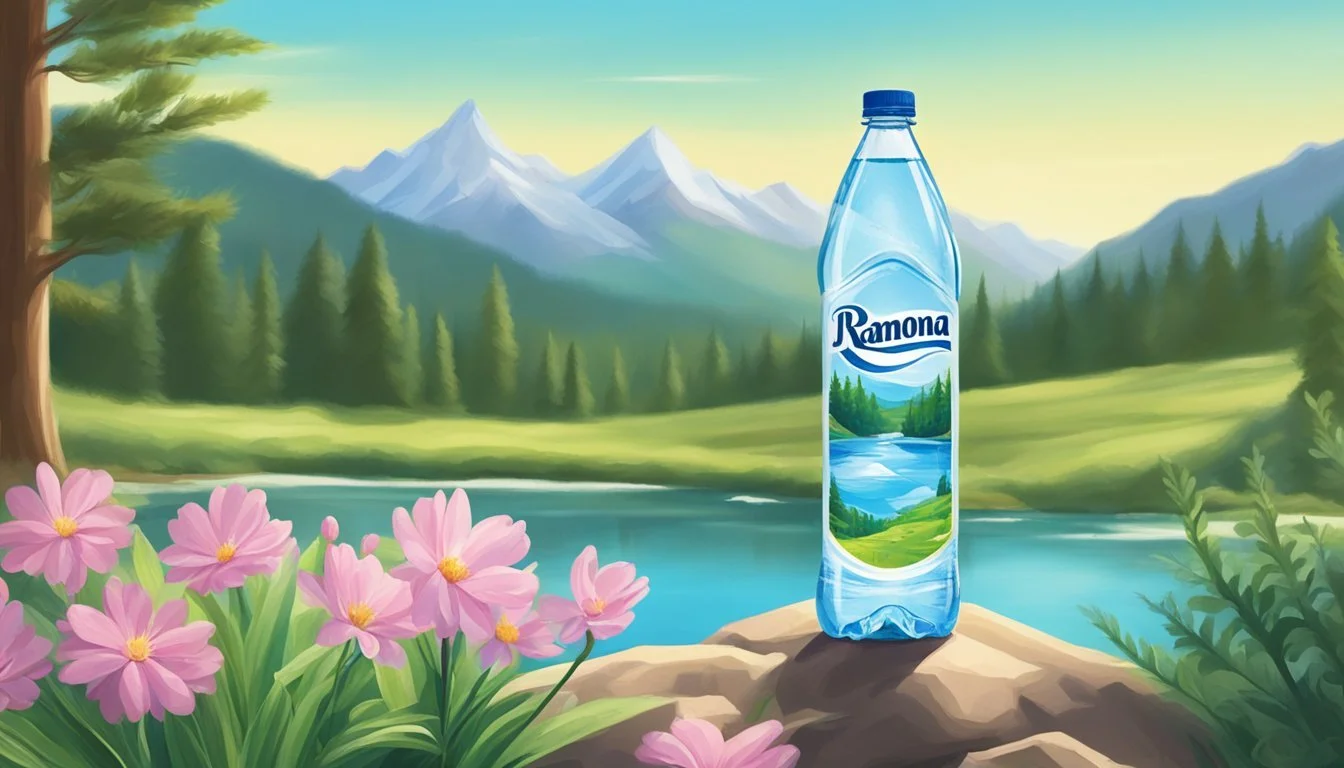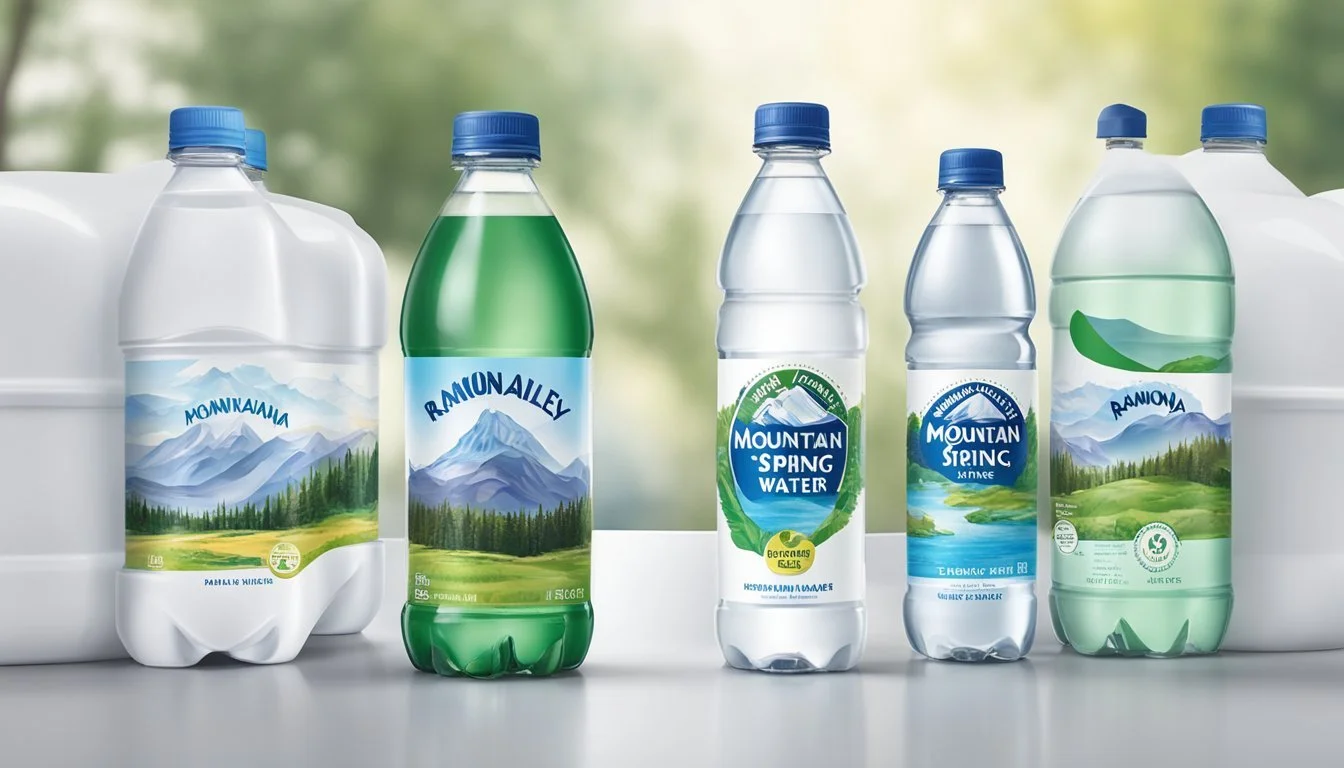Mountain Valley Spring Water vs. Ramona
Which Bottled Water is Better? Comparisons and Insights
If you're a bottled water enthusiast, you've likely encountered the names Mountain Valley Spring Water and Ramona. Both brands boast a reputation for quality, but which one truly stands out? Mountain Valley Spring Water, known for its light, clean taste and velvety texture, has been celebrated for its balanced pH and rich mineral content including calcium, magnesium, and potassium. Originating from pristine Arkansas springs, it has been a favorite since 1871 and continues to win accolades for its pure, refreshing quality.
Ramona, on the other hand, may not have the same century-old pedigree, but it offers its own set of strengths. Known for its meticulous sourcing and processing, Ramona appeals to those who prioritize purity and organic standards. The competition between these two giants of hydration isn't just about taste—it's about heritage, quality, and the detailed attributes of each bottle.
This comparison will dive into the specifics of what each brand offers to help you make a more informed choice. Whether you're drawn to Mountain Valley's enduring legacy and award-winning flavor or Ramona's modern approach and commitment to purity, your next sip could be the best decision you make all day.
Origin and Source Comparison
Mountain Valley Spring Water and Ramona Water have distinct origins and sources that contribute to their unique profiles. The following sections explore these origins and sources to give readers a deeper understanding of where each water comes from.
The Ouachita Mountains: Source of Mountain Valley Spring Water
Mountain Valley Spring Water is sourced from the Ouachita Mountains in Arkansas. The water originates from natural springs that flow in this pristine region. These springs are known for their high-quality mineral content. The water is consistently collected from a single source, ensuring uniform taste and mineral composition.
The Ouachita Mountains are renowned for their natural hot springs and pure water sources. This region's geology plays a significant role in the water's mineral balance. The pH level of Mountain Valley Spring Water typically ranges between 7.3 and 7.7, closely matching the body's natural pH. This characteristic is often highlighted by the brand as a selling point.
The Source of Ramona Water
Ramona Water sources its water from various springs, but specific details about the exact geographic origins and geological characteristics are less publicized. This diverse sourcing can result in varying mineral content and taste, depending on the specific spring used at any given time.
While Mountain Valley emphasizes a single-source origin, Ramona's approach allows for flexibility in sourcing, which may appeal to different consumer preferences. The lack of detailed origin information can make it challenging for consumers to always know the exact source and composition of the water they are drinking.
The flexibility in Ramona's sourcing allows it to adapt and provide a consistent supply, even if it lacks the specific branding tied to a particular region like Mountain Valley.
Comparing Water Quality and Purity
Examining the water quality and purity of Mountain Valley Spring Water and Ramona reveals differences in mineral composition, TDS levels, pH, and alkalinity.
Mineral Composition and TDS Levels
Mountain Valley Spring Water is known for its balanced mineral content, including calcium, magnesium, and potassium. These naturally occurring minerals enhance the taste and provide potential health benefits.
Ramona, on the other hand, does not emphasize its mineral content as prominently. It is essential to check the bottled label of Ramona for specific mineral data.
Total Dissolved Solids (TDS) Levels:
Mountain Valley: Around 220 mg/L
Ramona: Typically lower, but values can vary
The higher TDS level in Mountain Valley Spring Water often translates to a richer mineral profile, which some consumers prefer.
pH Levels and Alkalinity
Mountain Valley Spring Water maintains a balanced pH level, usually ranging between 7.3 and 7.7. This slightly alkaline nature aligns with the Environmental Protection Agency's (EPA) guidelines for drinking water.
Ramona's pH level tends to be closer to neutral, around 7.0, making it less alkaline compared to Mountain Valley. Alkaline water is believed by some to help neutralize acid in the bloodstream, but these claims require more research.
Both brands ensure their water is free from contaminants, adhering to purity standards set by regulatory bodies. The choice between these two brands may come down to personal preference regarding pH balance and mineral richness.
Taste Profile and Minerality
This section examines the flavor characteristics and mineral contents of Mountain Valley Spring Water and Ramona Water. Each provides a distinct taste experience due to their unique mineral compositions.
Flavor Characteristics of Mountain Valley Spring Water
Mountain Valley Spring Water is renowned for its light and clean flavor profile.
The water has a slight sweetness and a smooth, velvety texture. The taste is enhanced by the presence of natural minerals.
Magnesium, calcium, potassium, and sodium are found in balanced quantities. These minerals contribute not just to flavor, but also to the overall mouthfeel.
The subtle mineral aftertaste is particularly appreciated by those who prefer a natural, unadulterated drinking experience. This combination gives Mountain Valley a crisp and refreshing quality that many people enjoy.
Flavor Characteristics of Ramona Water
Ramona Water offers a robust and full-bodied taste, making it stand out among other bottled waters.
The minerality in Ramona is more pronounced due to higher levels of calcium and magnesium. These elements give the water a slightly chalky undertone that some find appealing.
The presence of sodium also adds a slight salinity to the flavor, which enriches the overall taste profile. The water's mineral balance provides a distinct aftertaste that lingers pleasantly.
This strong mineral presence makes Ramona Water a favorite for individuals seeking a more intense and mineral-rich drinking experience.
Packaging and Sustainability
Mountain Valley Spring Water and Ramona offer different approaches to packaging and sustainability. Each brand's choices in materials and practices reflect their commitment to environmental responsibility.
Glass vs. Plastic: Environmental Impact
Mountain Valley Spring Water often uses glass bottles, which are favored for being reusable and perceived as more eco-friendly. Their lightweight, recyclable aluminum bottles also offer a portable and sustainable option.
Ramona, on the other hand, opts for plastic bottles, which are convenient but pose a higher environmental burden due to BPA concerns and lower recycling rates.
Key Points:
Mountain Valley: glass and aluminum bottles
Ramona: primarily plastic bottles
Recycling and Eco-Friendly Practices
Mountain Valley emphasizes the use of 100% recyclable materials for their aluminum bottles and aims to reduce waste through glass bottle reusability. They also focus on innovative recycling technology to lessen environmental impact.
Ramona engages in recycling efforts but lacks the focus on reusable glass packaging seen with Mountain Valley. They highlight advancements in reducing plastic waste but still rely primarily on single-use bottles.
Key Points:
Mountain Valley: 100% recyclable aluminum, reusable glass
Ramona: improvement in plastic waste reduction
Sustainable Sourcing and Conservation
Mountain Valley prioritizes sustainable water sourcing and conservation efforts, emphasizing minimal environmental disruption during extraction. They also invest in eco-friendly practices and resource conservation.
Ramona works towards sustainable sourcing but is more concentrated on packaging innovations to mitigate environmental impact. Their efforts include advancing processing technology and energy efficiency to achieve their sustainability goals.
Key Points:
Mountain Valley: focus on conservation and eco-friendly sourcing
Ramona: packaging innovations and energy-efficient practices
Each brand demonstrates a commitment to sustainability in diverse ways, blending packaging choices with eco-friendly initiatives to reduce their environmental footprint.
Branding and Market Presence
Mountain Valley Spring Water and Ramona have distinct branding strategies and market presences which are crucial for influencing consumer preferences.
Award-Winning and Recognition
Mountain Valley Spring Water has garnered significant recognition in the bottled water industry. It has consistently ranked highly in bottled water power rankings, including top marks from sources like the Los Angeles Times. Additionally, it boasts awards from the Berkeley Springs International Water Tasting, reflecting its premium quality and palatable taste.
Ramona, meanwhile, focuses on its artisanal appeal. Although it may not have the same extensive award history as Mountain Valley, it is celebrated for its niche market presence and dedication to purity and sustainability. Awards or official rankings might be less frequent, but the brand enjoys a loyal customer base that values its commitment to natural ingredients and eco-friendly practices.
Availability in Grocery Stores
Mountain Valley Spring Water is widely available across major grocery stores and retailers. This extensive distribution network ensures that consumers can easily find and purchase Mountain Valley products nationwide. Its long history and robust supply chain contribute to its strong presence in both small and large retail outlets.
Ramona, on the other hand, often capitalizes on its artisanal branding to appeal to specialty grocery stores and local markets. While its presence in mainstream grocery chains might be more limited, it can frequently be found in health food stores and high-end markets where consumers seek premium and natural products. This selective availability enhances its appeal as an exclusive, high-quality brand.
Health Benefits and Electrolyte Content
Mountain Valley Spring Water and Ramona water offer distinct health benefits through their electrolyte content, particularly in terms of essential minerals like calcium and magnesium.
Essential Minerals for Hydration
Electrolytes play a vital role in maintaining hydration and bodily functions. Both Mountain Valley and Ramona waters contain key minerals essential for hydration.
Mountain Valley is known for its higher mineral content, offering a good balance of electrolytes that help sustain energy levels and support muscle function. The presence of minerals like sodium, potassium, and magnesium ensures optimal hydration and better performance during physical activities.
Ramona, on the other hand, focuses on providing clean and safe drinking water with a moderate amount of essential minerals. This makes it a viable option for those looking for a lighter mineral presence in their water without compromising on hydration needs.
Calcium and Magnesium Levels
Calcium and magnesium are crucial for bone health and efficient muscle function. Mountain Valley Spring Water offers higher levels of both these minerals, which can contribute significantly to the daily intake necessary for maintaining strong bones and proper muscle contractions.
Mountain Valley offers approximately 80 mg/L of calcium and 26 mg/L of magnesium, making it a solid choice for those who want to fulfill their daily mineral intake through water consumption.
Ramona provides a more moderate concentration of these essential minerals, making it suitable for those concerned with mineral overload or who obtain their calcium and magnesium from other dietary sources. This balanced approach ensures adequate hydration while still supporting overall health.
Pricing and Value Considerations
When choosing between Mountain Valley Spring Water and Ramona, price and value for money are crucial. This section will examine these aspects by looking at the cost differences and the value derived from each brand.
Comparison of Costs
Mountain Valley Spring Water typically comes at a premium price, especially for its glass bottle options. Pricing for a 1-liter bottle can range from $2 to $3. This higher cost reflects its focus on quality and sustainable packaging.
Ramona, on the other hand, offers more budget-friendly options. A 1-liter bottle may cost between $1 to $1.50, making it an attractive choice for cost-conscious consumers who still desire quality bottled water.
Here's a brief comparison:
Brand Bottle Type Price Range (per 1L) Mountain Valley Spring Glass $2 - $3 Ramona Plastic $1 - $1.50
Ramona's affordability makes it a solid choice for daily consumption without significant financial strain, whereas Mountain Valley offers a higher-end option with a focus on premium quality.
Value for Money
Value for money encompasses more than just the price tag. Mountain Valley provides mineral-rich water, which some people find beneficial for their health. Its glass packaging is also environmentally friendly and helps maintain water quality and taste.
Conversely, Ramona's value proposition lies in its affordability and availability. While it may not offer the same mineral content as Mountain Valley
Historic Significance and Cultural Impact
Mountain Valley Spring Water has a rich history and cultural significance that includes presidential preference and notable endorsements. This section covers its historic importance and the cultural references linked to the brand.
Mountain Valley’s Legacy and Presidential Preference
Mountain Valley Spring Water was established in 1871, making it one of the oldest bottled water companies in the United States. Its water source, a protected spring in the Ozark Mountains near Hot Springs, has been supplying high-quality water for over a century.
A highlight of Mountain Valley’s legacy is its connection to several U.S. presidents. Notably, President Dwight D. Eisenhower favored Mountain Valley Spring Water, reportedly drinking it during his recovery from a heart attack in 1955. This preference added to the brand's esteemed reputation and association with health and wellness.
Cultural References and Endorsements
Mountain Valley Spring Water has made appearances in various cultural contexts and received endorsements from well-known personalities. For example, music legend Elvis Presley preferred this brand, often requesting it during his tours. This association with iconic figures helped the brand cultivate a loyal base.
Additionally, Mountain Valley Spring Water has been featured in numerous articles and television shows, cementing its place in American culture. Its signature green glass bottle is not only a trademark but also a symbol of quality and tradition in the bottled water market. This cultural footprint showcases the enduring significance of Mountain Valley Spring Water.
Comparison with Other Premium Water Brands
In comparing Mountain Valley Spring Water with other premium water brands, it's critical to consider taste, source, and mineral content. These factors influence consumer choices and underscore the unique characteristics of each brand.
Acqua Panna and Fiji Water
Acqua Panna, sourced from Tuscany, Italy, is known for its smooth taste and balanced mineral composition. Fiji Water, sourced from an artesian aquifer in Viti Levu, Fiji, boasts a slightly sweet taste with a high silica content that provides a distinctive smoothness.
Brand Source Key Features Acqua Panna Tuscany, Italy Smooth taste, balanced minerals Fiji Water Viti Levu, Fiji High silica, slightly sweet taste
Both brands compete closely with Mountain Valley in terms of premium quality and sophisticated flavor profiles.
Evian and Voss
Evian, sourced from the Cachat Spring in France, possesses a neutral pH and a unique mineral blend. This makes it suitable for consumers seeking a clean and refreshing taste. Voss, on the other hand, originates from an aquifer in Norway. Its soft and low mineral content renders it exceptionally pure.
Brand Source Key Features Evian Cachat Spring, FR Neutral pH, balanced taste Voss Norway Soft, low mineral content
These brands emphasize purity and distinctive mineral compositions, posing strong competition to Mountain Valley.
Additional Bottled Water Contenders
Other notable contenders include Icelandic Glacial, known for its high pH and low TDS (Total Dissolved Solids). Path offers a more sustainable option with its refillable aluminum bottles. Liquid Death markets itself with edgy branding and is favored for its crisp taste.
Dasani and Aquafina are widely available, but they often face criticism for being purified tap water rather than spring-sourced. Core Hydration and Smartwater appeal to health-conscious consumers with their added electrolytes.
For a more premium experience, San Pellegrino offers sparkling options, whereas Poland Spring and Nestlé Pure Life remain popular for their cost-effectiveness and widespread availability.
The market for bottled water is diverse, catering to a range of preferences, each brand offering unique features that differentiate it from competitors.
More About Mountain Valley Spring Water
Acqua Panna vs Mountain Valley Spring Water: Which Bottled Water is Better?
Aquafina vs Mountain Valley Spring Water: Which Bottled Water is Better?
Arrowhead vs Mountain Valley Spring Water: Which Bottled Water is Better?
Bai vs Mountain Valley Spring Water: Which Bottled Water is Better?
Boxed Water vs Mountain Valley Spring Water: Which Bottled Water is Better?
Core Hydration vs Mountain Valley Spring Water: Which Bottled Water is Better?
Dasani vs Mountain Valley Spring Water: Which Bottled Water is Better?
Deer Park vs Mountain Valley Spring Water: Which Bottled Water is Better?
Essentia vs Mountain Valley Spring Water: Which Bottled Water is Better?
Eternal vs Mountain Valley Spring Water: Which Bottled Water is Better?
Ethos vs Mountain Valley Spring Water: Which Bottled Water is Better?
Evian vs Mountain Valley Spring Water: Which Bottled Water is Better?
Fiji vs Mountain Valley Spring Water: Which Bottled Water is Better?
Mountain Valley Spring Water vs HFactor: Which Bottled Water is Better?
Ice Mountain vs Mountain Valley Spring Water: Which Bottled Water is Better?
Icelandic Glacial vs Mountain Valley Spring Water: Which Bottled Water is Better?
Just Water vs Mountain Valley Spring Water: Which Bottled Water is Better?
LIFEWTR vs Mountain Valley Spring Water: Which Bottled Water is Better?
Mountain Valley Spring Water vs 1907water: Which Bottled Water is Better?
Mountain Valley Spring Water vs 7-Select: Which Bottled Water is Better?
Mountain Valley Spring Water vs Action: Which Bottled Water is Better?
Mountain Valley Spring Water vs Alkaline88: Which Bottled Water is Better?
Mountain Valley Spring Water vs Antipodes: Which Bottled Water is Better?
Mountain Valley Spring Water vs Aqua Carpatica: Which Bottled Water is Better?
Mountain Valley Spring Water vs Augi: Which Bottled Water is Better?
Mountain Valley Spring Water vs Big Chill: Which Bottled Water is Better?
Mountain Valley Spring Water vs Big Win: Which Bottled Water is Better?
Mountain Valley Spring Water vs Blk: Which Bottled Water is Better?
Mountain Valley Spring Water vs BodyArmor: Which Bottled Water is Better?
Mountain Valley Spring Water vs Cascade Mountain: Which Bottled Water is Better?
Mountain Valley Spring Water vs Castle Rock: Which Bottled Water is Better?
Mountain Valley Spring Water vs CBD Living: Which Bottled Water is Better?
Mountain Valley Spring Water vs Cirro: Which Bottled Water is Better?
Mountain Valley Spring Water vs Crystal Geyser: Which Bottled Water is Better?
Mountain Valley Spring Water vs Crystal Lake: Which Bottled Water is Better?
Mountain Valley Spring Water vs Defy: Which Bottled Water is Better?
Mountain Valley Spring Water vs Erewhon: Which Bottled Water is Better?
Mountain Valley Spring Water vs Essence pH10: Which Bottled Water is Better?
Mountain Valley Spring Water vs Flow: Which Bottled Water is Better?
Mountain Valley Spring Water vs Hawaii Volcanic: Which Bottled Water is Better?
Mountain Valley Spring Water vs Hawaiian Springs: Which Bottled Water is Better?
Mountain Valley Spring Water vs Kirkland Signature: Which Bottled Water is Better?
Mountain Valley Spring Water vs Kroger: Which Bottled Water is Better?
Mountain Valley Spring Water vs Liquid Death: Which Bottled Water is Better?
Mountain Valley Spring Water vs Mananalu: Which Bottled Water is Better?
Mountain Valley Spring Water vs Nestle Pure Life: Which Bottled Water is Better?
Mountain Valley Spring Water vs Open Water: Which Bottled Water is Better?
Mountain Valley Spring Water vs Ophora: Which Bottled Water is Better?
Mountain Valley Spring Water vs Origin: Which Bottled Water is Better?
Mountain Valley Spring Water vs Ozarka: Which Bottled Water is Better?
Mountain Valley Spring Water vs Path: Which Bottled Water is Better?
Mountain Valley Spring Water vs Penta: Which Bottled Water is Better?
Mountain Valley Spring Water vs Perrier: Which Bottled Water is Better?
Mountain Valley Spring Water vs Poland Spring: Which Bottled Water is Better?
Mountain Valley Spring Water vs Proud Source: Which Bottled Water is Better?
Mountain Valley Spring Water vs Purely Sedona: Which Bottled Water is Better?
Mountain Valley Spring Water vs Refreshe: Which Bottled Water is Better?
Mountain Valley Spring Water vs Richard's Rainwater: Which Bottled Water is Better?
Mountain Valley Spring Water vs San Pellegrino: Which Bottled Water is Better?
Mountain Valley Spring Water vs Simple Truth: Which Bottled Water is Better?
Mountain Valley Spring Water vs Skyra: Which Bottled Water is Better?
Mountain Valley Spring Water vs Smartwater: Which Bottled Water is Better?
Mountain Valley Spring Water vs Solan de Cabras: Which Bottled Water is Better?
Mountain Valley Spring Water vs Starkey: Which Bottled Water is Better?
Mountain Valley Spring Water vs Tahoe: Which Bottled Water is Better?
Mountain Valley Spring Water vs Talking Rain AQA: Which Bottled Water is Better?
Mountain Valley Spring Water vs The Well: Which Bottled Water is Better?
Mountain Valley Spring Water vs Topo Chico: Which Bottled Water is Better?
Mountain Valley Spring Water vs Tru Alka: Which Bottled Water is Better?
Mountain Valley Spring Water vs Volvic: Which Bottled Water is Better?
Mountain Valley Spring Water vs Voss: Which Bottled Water is Better?
Mountain Valley Spring Water vs Waiakea: Which Bottled Water is Better?
Mountain Valley Spring Water vs Weird Water: Which Bottled Water is Better?
Mountain Valley Spring Water vs Whole Foods 365: Which Bottled Water is Better?
Mountain Valley Spring Water vs Zenwtr: Which Bottled Water is Better?
Mountain Valley Spring Water vs Zephyrhills: Which Bottled Water is Better?










